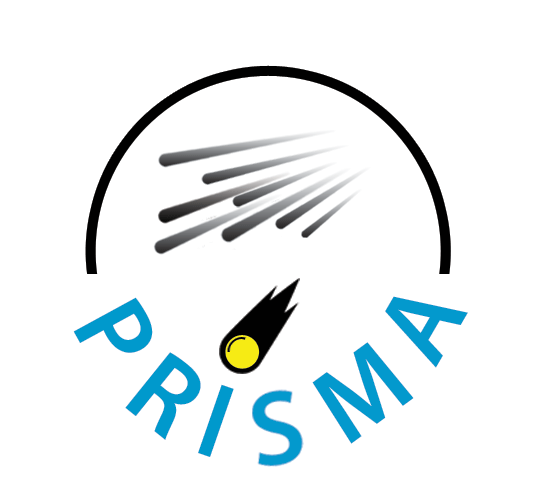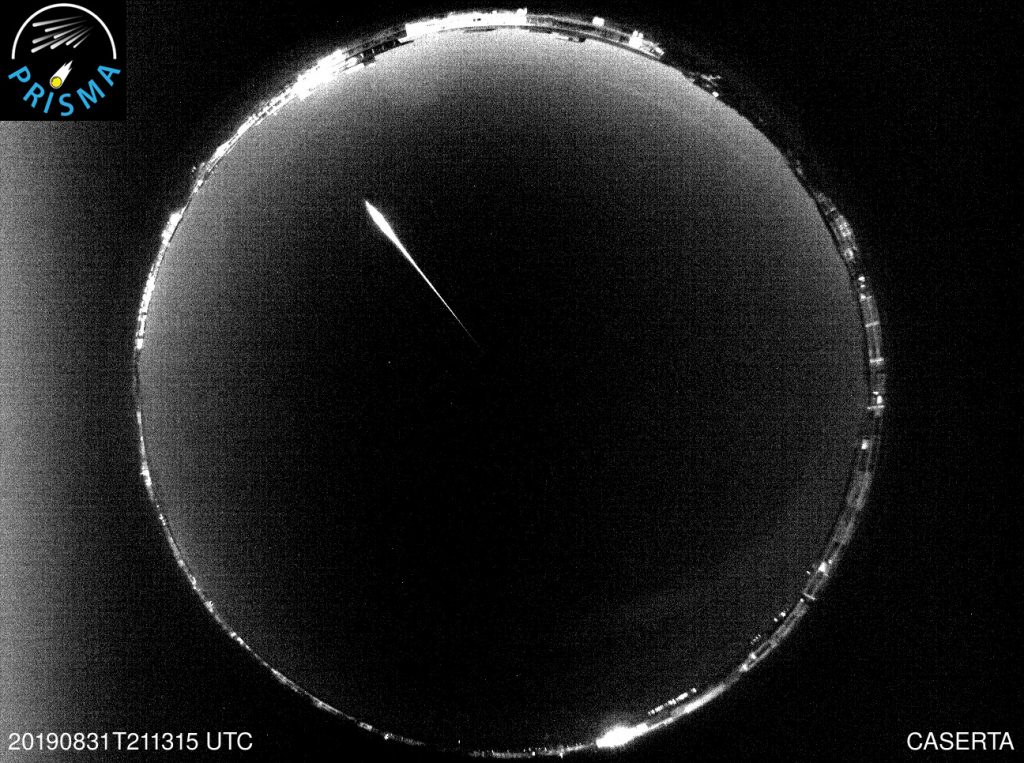
History
The PRISMA project consists of a network of all-sky cameras for the continuous observation of the sky. The network, under the coordination of the Astrophysical Observatory of Turin (INAF), is in an advanced stage of completion and it currently consists of about 55 operating cameras, mostly located in Northern Italy, and another 20 that are currently being installed or purchased.
The PRISMA project aims to create a nationwide network of all-sky cameras for the observation of bright meteors (“fireballs”), in order to determine the orbits of the objects that cause them (meteoroids) and to delimit, with a good degree of approximation, the areas of the possible meteorite fall, thus potentially allowing its recovery, analysis and classification. Since meteorites are the main source of information on the early history of the Solar System and on the material and the formation mechanisms from which the Sun and the planets originated, the recovery of “fresh” meteorites, namely recently fallen ones, is particularly important because it allows the analysis of material not yet contaminated by the terrestrial environment. Moreover, the systematic observation of the sky, carried out 24 hours a day by the PRISMA cameras, allows to collect useful data for meteorology and environmental monitoring, with particular reference to cloud cover and ALAN levels.
The PRISMA project is open to anyone, scientists and non-scientists alike. Indeed, PRISMA involves not only researchers from the National Institute of Astrophysics (INAF) and from multiple universities, but also astrophile groups, astronomical and meteorological, regional and municipal observatories, museums, scientific dissemination centres, and private citizens. Furthermore, PRISMA offers an educational programme and dedicated workshops on astronomy for schools, in order to involve students and teachers in the research activities of the project, side by side with the researchers themselves, thus bridging the gap between the world of education and the world of work and research.


National coordinator
Daniele Gardiol
PRISMA project office
- Daniele Gardiol – INAF O.A.Torino (National Coordinator)
- Dario Barghini – INAF O.A.Torino and Università di Torino
- Sara Bertocco – INAF O.A.Trieste
- Albino Carbognani – INAF OAS Bologna
- Tullia Carriero – INAF O.A.Torino
- Matteo Di Carlo – INAF O.A.Abruzzo
- Mario Di Martino – INAF O.A.Torino
- Carmelo Falco – Gal Hassin
- Giovanni Pratesi – Università di Firenze
- Walter Riva – O.A.Righi Genova
- Giovanna Stirpe – INAF OAS Bologna
- Antonio Volpicelli – INAF O.A.Torino
PRISMA network
- Institutions http://www.prisma.inaf.it/index.php/chi-siamo/enti-e-istituti-partecipanti/
- People http://www.prisma.inaf.it/index.php/chi-siamo/il-nostro-team/
Outlook
During the next few years, PRISMA will continue to expand with the installation of dozens of additional all-sky cameras, thus further broadening its coverage of the Italian airspace.
Links
- More information on the network can be found here: http://www.prisma.inaf.it/
- Did you observe a fireball? Report your sighting and imagery via the IMO report form
